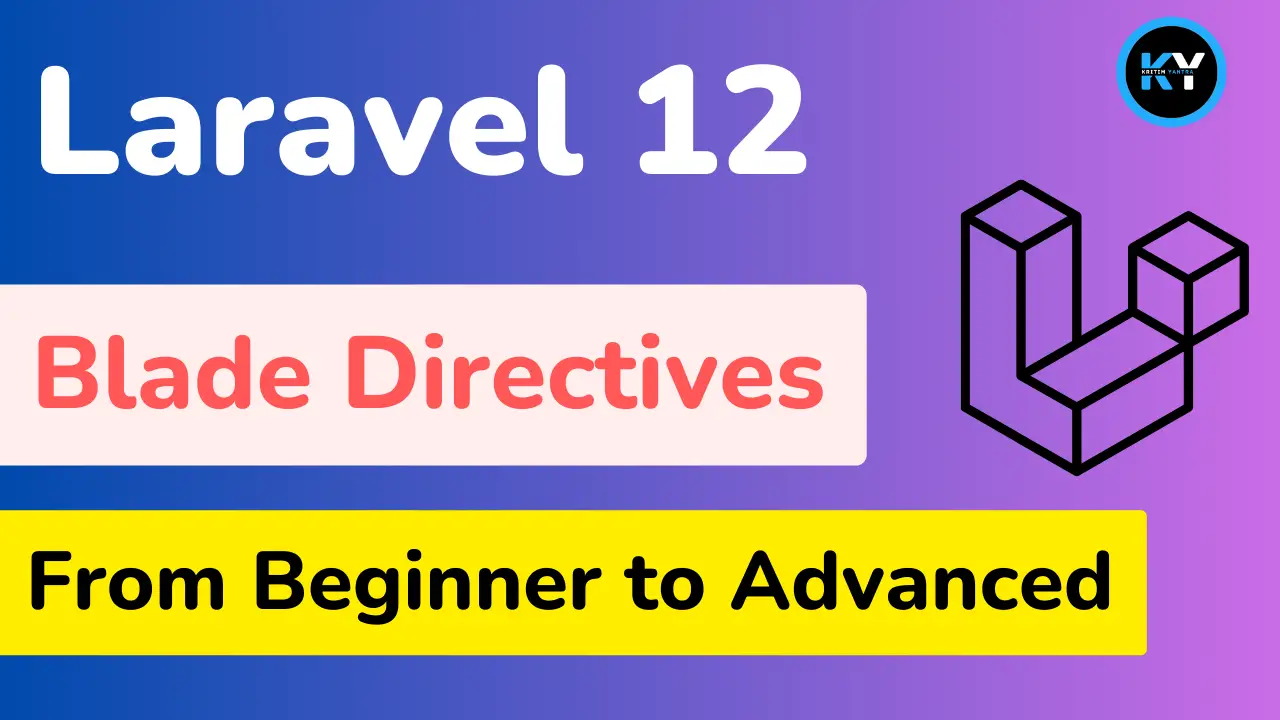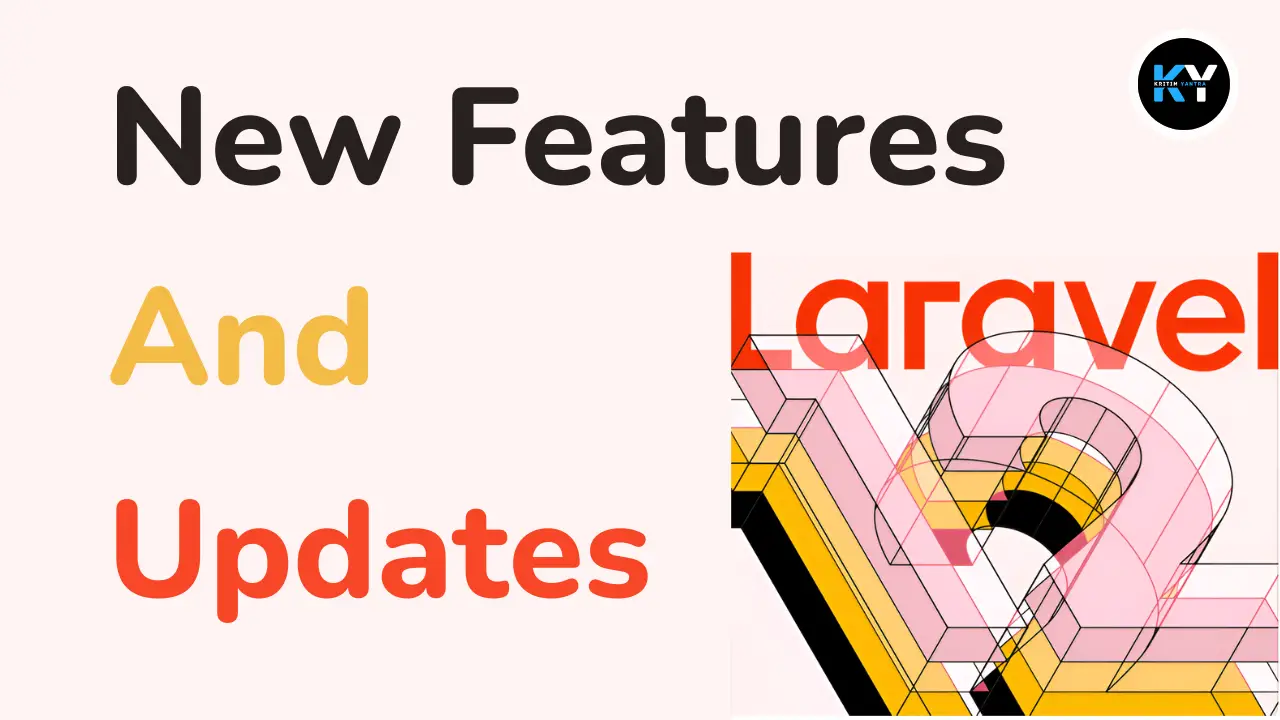Laravel 12 vs Laravel 10: What's New and Different?

Kritim Yantra
Jul 02, 2025
If you've ever worked with Laravel before, you know it's one of the most elegant and developer-friendly frameworks out there. But if you're new or returning to Laravel after a break, you might be wondering:
"How is Laravel 12 different from Laravel 10?"
Well, you’re in the right place. Whether you're just starting out or already knee-deep in PHP code, this beginner-friendly guide will walk you through the major changes between Laravel 10 and the shiny new Laravel 12 — in a clear, visual, and relatable way.
🚀 A Quick Refresher: What Is Laravel?
Laravel is a free, open-source PHP framework used to build web applications. Think of it as the Lego set for web developers — it gives you pre-built blocks to create anything from simple blogs to complex enterprise systems.
With each new version, Laravel becomes more powerful, faster, and easier to use.
🔄 Versioning: Why the Jump from 10 to 12?
Laravel uses semantic versioning, and new major versions are released every year. Laravel 11 was released in 2024, and Laravel 12 landed in 2025. So we’re not skipping versions — it's all part of a steady upgrade cycle.
🧠 Key Differences Between Laravel 10 and 12
Let’s explore what’s actually changed. Here are the highlights:
1. 🧼 Cleaner Project Structure
Laravel 12 introduces a streamlined default structure:
- No more
Http/Controllers/Authby default - Simplified folder layout with less boilerplate
- Encourages a more opinionated structure for clarity and maintainability
Example:
# In Laravel 12, you won’t see the default auth controllers unless you install Breeze or Jetstream.
Why it matters:
Less clutter means easier navigation and faster onboarding for new developers.
2. ⚙️ Laravel Reverb (Real-Time Magic)
Laravel 12 officially supports Reverb, Laravel’s real-time WebSocket server.
- Built-in broadcasting with zero extra setup
- Perfect for chat apps, notifications, live dashboards
Example:
Broadcast::channel('orders.{orderId}', function ($user, $orderId) {
return $user->id === Order::find($orderId)->user_id;
});
Why it matters:
You can now build real-time features out-of-the-box without complex third-party tools.
3. 🧪 Built-in Testing Improvements
Testing got a glow-up:
- Higher performance for Pest (Laravel’s preferred testing tool)
- Easier test setup with dedicated
tests/Browserfor Dusk - Better support for parallel testing
Why it matters:
Writing tests feels faster and more intuitive — a big win for teams and solo devs alike.
4. ⚡️ Performance & PHP 8.3 Support
Laravel 12 is tuned for speed and requires PHP 8.3.
- Better use of native PHP features
- Optimized route caching and container resolution
Why it matters:
Faster apps with cleaner syntax — and less code to write.
5. 🧩 Laravel Volt (Experimental)
Laravel 12 experiments with Laravel Volt, a modern way to build Laravel apps using components similar to Livewire but even more streamlined.
- Blade + JavaScript in one file
- Reactive without full page reloads
Think of Volt as the Vue of Laravel without needing a frontend build step.
👷♂️ Developer Experience: Better, Simpler, Smarter
Beyond features, Laravel 12 brings small but meaningful improvements:
- Improved artisan command suggestions
- Better default error pages
- Simpler environment variable management
All of this makes it easier to focus on building, not debugging.
🧰 Upgrade Guide in a Nutshell
If you're upgrading from Laravel 10, here's what to check:
- ✅ Upgrade your PHP version to 8.3
- ✅ Review deprecated methods and classes
- ✅ Revisit your project structure and auth setup
- ✅ Use Laravel Shift or the official upgrade docs for detailed steps
📌 Summary: Laravel 12 vs 10
| Feature | Laravel 10 | Laravel 12 |
|---|---|---|
| Project Structure | Traditional | Cleaner & lean |
| Real-time (Reverb) | Manual setup | Built-in |
| PHP Requirement | PHP 8.1+ | PHP 8.3+ |
| Testing Tools | Basic | Enhanced, faster |
| Laravel Volt | Not available | Experimental support |
🎯 Final Thoughts
Laravel 12 isn’t just a step forward — it’s a leap toward a more modern, enjoyable developer experience.
If you’re starting fresh, Laravel 12 is the best place to begin. And if you're upgrading, the changes are manageable and worth it.
Happy coding! 🧑💻
Tags
Comments
No comments yet. Be the first to comment!
Please log in to post a comment:
Sign in with GoogleRelated Posts
 Kritim Yantra
Kritim Yantra

